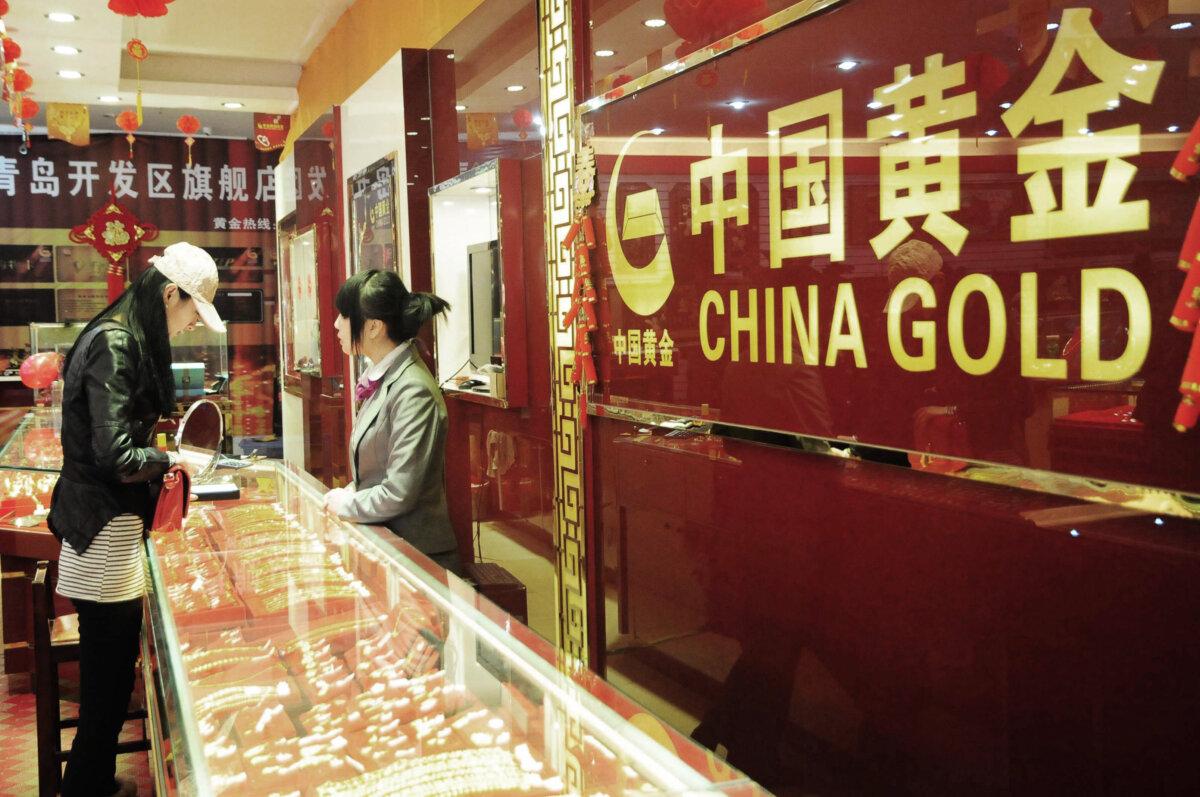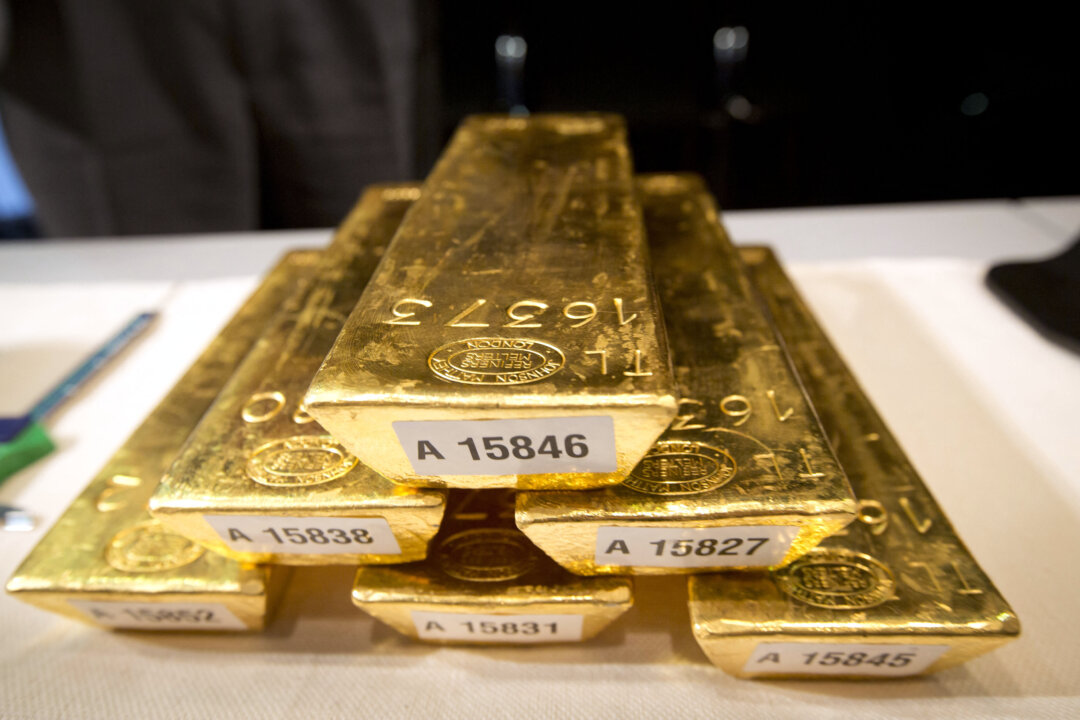The persistent rise in gold prices indicates growing demand for gold as a safe-haven asset, largely driven by economic uncertainty and geopolitical risks.
News Analysis
The price of gold soared to a new high after China imposed retaliatory tariffs on exports from the United States. The yellow metal is in high demand as central banks and investors increase their gold reserves in anticipation of a worsening U.S.–China trade war.
The global investment demand for gold increased by a quarter year-on-year in 2024, reaching a four-year high of 1,180 metric tons (42 million ounces), according to a Feb. 5 report by the World Gold Council, a London-based international trade association for the gold industry.
Central banks increased their gold holdings for three consecutive years, totaling more than 1,000 metric tons (35 million ounces) last year.
The rising trend of gold will continue despite the uncertainty surrounding rate cuts by the U.S. Federal Reserve. In early January, Goldman Sachs Group Inc. revised its gold price forecast to reach $3,000 per ounce by mid-2026, half a year later than the previous outlook.
As of Feb. 5, the precious metal’s spot rate climbed another 2 percent after reaching the historic high mark of $2,800 per ounce on Jan. 30.
U.S. President Donald Trump signed executive orders on Feb. 1 to impose 25 percent universal tariffs on Mexico and Canada, effective on Feb. 4. Although he paused the duties two days later by about a month for both countries as they agreed to curb fentanyl inflow into the United States, the tariff threat hasn’t subsided.
The negotiations surrounding the 10 percent universal tariffs on China, also announced on Feb. 1, are taking longer.
On Feb. 4, the day the tariffs took effect, Beijing announced a 15 percent tax on selected U.S. imports, effective on Feb. 10. The retaliatory tariffs apply to about $20 billion of annual imports from the United States. U.S. tariffs affect more than $400 billion of annual exports from China.
The current round of tariff negotiations has centered around fentanyl, a leading cause of death for Americans aged 18 to 45, claiming the lives of over 200 Americans every day, according to the Drug Enforcement Administration. Precursors for fentanyl production are produced in China and exported to Mexico before the end products enter the United States.
The day after Washington announced a 10 percent universal tariff on Chinese goods, Beijing urged the United States to “view and solve its own fentanyl issue in an objective and rational way instead of threatening other countries with arbitrary tariff hikes.”
Trump is expected to negotiate with Chinese leader Xi Jinping in the near future. However, levies on Chinese goods are likely to stay.
The trade policy study that Trump ordered on day one of his new term in office is due on April 1. The investigation covers China’s unfair trade practices and compliance with the 2020 “phase one” trade deal.
Trump has also said the European Union will be the next target of U.S. tariffs.As the world’s largest gold consumption country by volume, Chinese demand for the metal is a major market driver. Last year, the country saw weakened demand for gold jewelry and robust investment purchases, according to the World Gold Council.

China’s sluggish economy, bogged down by a collapsed property sector since 2021, is increasingly dependent on exports, making it more vulnerable to tariffs.
Sun Kuo-Shyang, a scholar in Asia–Pacific studies, told The Epoch Times that the Chinese population has contributed to the rise in gold’s price, underscoring their persistent concerns about the depreciation of their assets. Consequently, the Chinese have pivoted away from gold jewelry.
Instead, Chinese purchases of gold bars and coins rose by a quarter of a percent to 373 metric tons (13.2 million ounces), according to the China Gold Association. This shift is primarily driven by the perception that gold bars are more effective for asset preservation.
“The hedging and value-preserving properties of gold became more prominent, leading to a significant rise in gold bar sales,” Chinese gold authorities told state-run media.
China’s central bank has also increased its gold holdings, bringing its total gold reserves to 73.29 million ounces at the end of last year.
Sun expects rising tensions between the United States and China to consistently fuel demand for gold, resulting in climbing prices of the safe-haven asset.
The World Gold Council predicts that demand for gold will continue to be strong in 2025.
“Geopolitical and macroeconomic uncertainty should be prevalent themes this year, supporting demand for gold as a store of wealth and hedge against risk,” the council said.
Xin Ning contributed to this article.

